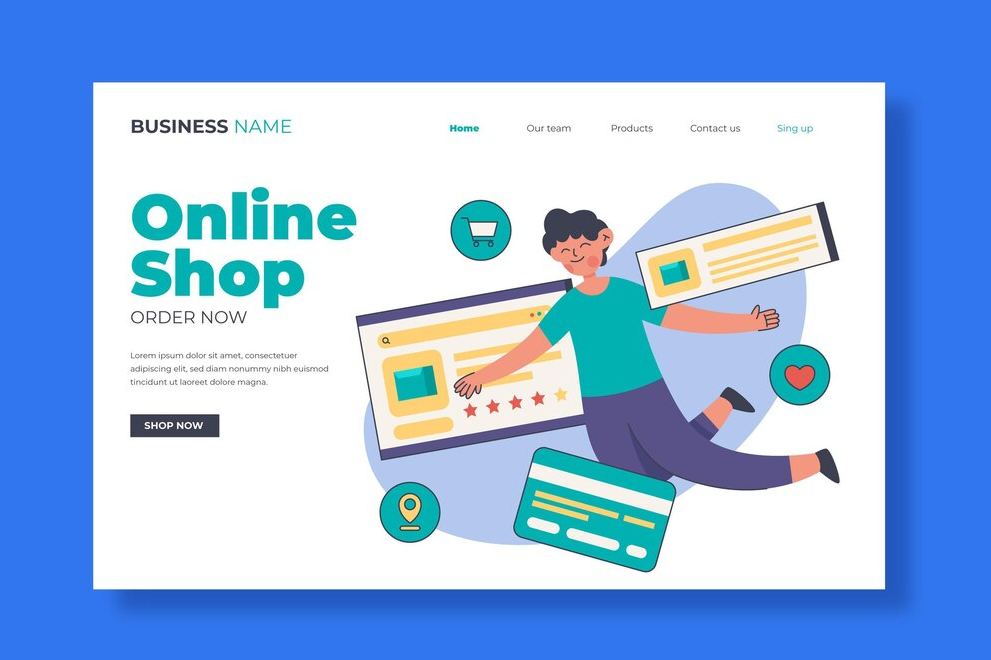Top 20 Secrets of Successful Freelancing

Are you ready to unlock the secrets to successful freelancing? Imagine transforming your skills into a thriving business, enjoying the freedom to work on your own terms. In this ever-evolving digital age, mastering the art of freelancing can lead to unparalleled professional satisfaction and financial independence. This guide is designed to equip you with the essential strategies and insights needed to excel in the competitive freelance market. Get ready to embark on a journey that will elevate your career and redefine your understanding of successful freelancing. Dive in and discover the path to achieving your freelancing dreams!
Table of Contents
What is Freelancing

Freelancing is a work arrangement where individuals offer their skills and services on a project or contract basis, rather than being employed full-time by a single employer. Freelancers operate independently, managing their own schedules and selecting the projects or clients they wish to work with. This model provides flexibility and autonomy, allowing freelancers to set their own rates and work from various locations. They are typically responsible for their own business expenses, including taxes and insurance. Freelancing can encompass a wide range of fields, including writing, graphic design, programming, and consulting, among others.
Top 20 Freelancing Tips for Success
1. Define Your Expertise and What You Want to Offer
The cornerstone of successful freelancing lies in clearly defining your expertise and what you want to offer. Start by assessing your strengths, passions, and the unique skills that set you apart. Determine the services you can deliver with excellence and identify your target market. Specializing in a niche not only makes you more attractive to potential clients but also establishes you as an authority in that field. This clarity allows you to craft tailored marketing strategies, ensuring your offerings resonate with the right audience. By precisely defining your expertise, you lay a solid foundation for successful freelancing.
2. Consider and Perfect Your Skill Set
To achieve successful freelancing, it’s imperative to consider and perfect your skill set. Start by conducting a thorough assessment of your current abilities. Identify areas for improvement and seek out training or resources to enhance your proficiency. Engage in continuous learning to stay abreast of industry trends and emerging technologies. This dedication to skill enhancement not only increases your marketability but also ensures you deliver exceptional quality to your clients. By investing in your professional development, you establish a reputation for excellence, a crucial component of successful freelancing.
3. Stay Ahead in Your Field by Regularly Updating Skills
To achieve successful freelancing, staying ahead in your field by regularly updating your skills is crucial. The freelance landscape is ever-evolving, with new tools and techniques emerging constantly. Engage in continuous education through online courses, workshops, and industry seminars. Keep abreast of the latest trends and advancements in your niche. This ongoing learning not only enhances your expertise but also demonstrates your commitment to excellence. By proactively updating your skills, you ensure your services remain competitive and relevant, laying a strong foundation for successful freelancing.
4. Showcase Your Best Work by Building a Strong Portfolio

- Select Your Best Work: Begin by carefully choosing a selection of your highest-quality projects. Focus on work that demonstrates your expertise and aligns with the type of clients you want to attract. Include a variety of examples to showcase your versatility, such as different styles, techniques, or project types.
- Organize and Categorize: Group your selected work into relevant categories or sections. For instance, if you’re a graphic designer, you might have sections for branding, web design, and print materials. This organization allows potential clients to easily navigate your portfolio and find examples that match their needs.
- Create a Professional Presentation: Design a visually appealing and user-friendly portfolio. Choose a clean, modern layout that highlights your work without distractions. Use high-resolution images or well-designed case studies to present your projects, ensuring that each piece is showcased to its best advantage.
- Include Detailed Descriptions: For each project, provide a concise description that includes the project’s goals, your role, the tools or techniques used, and the results or impact of the work. This context helps potential clients understand your process and the value you bring to the table.
- Highlight Client Testimonials: Add quotes or testimonials from satisfied clients, if available. These endorsements provide social proof of your reliability and skills, reinforcing the quality of your work. Make sure testimonials are specific and relevant to the work showcased.
- Update Regularly: Keep your portfolio fresh by regularly updating it with new projects and removing outdated or less relevant work. An up-to-date portfolio reflects your current skills and ongoing professional development, keeping you competitive in the market.
- Make It Accessible: Ensure your portfolio is easily accessible to potential clients. If using a personal website, optimize it for mobile devices and ensure fast loading times. Alternatively, use professional networking platforms or portfolio services that offer good visibility and user experience.
- Promote Your Portfolio: Actively promote your portfolio to reach a broader audience. Share it in proposals, on social media, and in professional networks. Regularly updating your portfolio and promoting it helps increase visibility and attract new opportunities.
5. Use Online Platforms to Help You Find Clients

- Create Professional Profiles: Meticulously curate profiles on popular freelancing websites like Upwork, Fiverr, and Freelancer. Include a professional photo, a compelling summary of your skills, and a portfolio showcasing your best work. Highlight your unique selling points to stand out in a crowded marketplace.
- Engage in Niche-Specific Forums: Join and actively participate in forums, discussion boards, and social media groups relevant to your expertise. Platforms like LinkedIn, Reddit, and industry-specific Facebook groups are excellent for networking. Contribute valuable insights and showcase your knowledge to attract potential clients.
- Build a Robust Network: Network with individuals and businesses in these online spaces. Connect with professionals, join webinars, and attend virtual events. Building relationships with influencers and peers in your industry can lead to referrals and consistent client acquisition.
- Maintain an Active Presence: Regularly update your portfolio with recent projects, respond promptly to client inquiries, and request reviews from satisfied clients. An active and engaged presence on these platforms enhances your visibility and builds credibility, making you more attractive to potential clients.
- Leverage Digital Arenas: Utilize these platforms as conduits to a plethora of potential clients. Optimize your profiles with keywords relevant to your services, participate in discussions, and use social media to share your work and successes. A strategic online presence is essential for successful freelancing, ensuring you reach a broader audience.
- Seek Continuous Improvement: Adapt and evolve your online strategies based on feedback and industry trends. Stay updated with the latest tools and technologies that can enhance your freelancing services. Continuous learning and improvement are vital for sustained successful freelancing.
6. Build Your Digital Presence
- Craft a Professional Website: Establish a website that showcases your portfolio, expertise, and unique value proposition. Ensure it is visually appealing and easy to navigate.
- Engage on Social Media Platforms: Actively participate on platforms like LinkedIn, Twitter, and Instagram. Share valuable content and industry insights to build a following and demonstrate your expertise.
- Optimize Freelancing Profiles: Update your profiles on freelancing sites like Upwork and Fiverr. Highlight your skills, experience, and achievements to attract potential clients.
- Participate in Online Communities: Join relevant online forums and communities. Engage in discussions, offer insights, and network with other professionals to increase your visibility.
- Produce High-Quality Content: Consistently create and share content that highlights your proficiency and knowledge. This can include blog posts, articles, and videos.
- Solidify Your Reputation: A well-rounded digital presence not only attracts potential clients but also solidifies your reputation, paving the way for successful freelancing.
7. Improve Work Quality by Investing in the Right Tools
- Identify Essential Tools: Start by identifying the tools necessary for your specific freelancing field. These can include software for project management, communication, design, or coding.
- Research and Select the Best Options: Conduct thorough research to find the best tools available. Compare features, user reviews, and pricing to ensure you choose tools that offer the most value and functionality.
- Invest in High-Quality Software: Allocate a portion of your budget to invest in premium software. High-quality tools often come with advanced features and better support, enhancing your productivity and work quality.
- Stay Updated with New Technologies: Keep abreast of new technologies and updates in your industry. Regularly upgrading your tools ensures you are always working with the latest features and improvements.
- Learn and Master Your Tools: Invest time in learning how to use your tools effectively. Attend webinars, take online courses, or read user manuals to master the functionalities and maximize their potential.
- Enhance Productivity and Efficiency: The right tools can streamline your workflow, reduce errors, and save time. Enhanced productivity and efficiency are key to delivering high-quality work consistently.
- Boost Client Satisfaction: By utilizing the best tools, you can produce superior results, leading to higher client satisfaction and repeat business. Investing in the right tools is a cornerstone of successful freelancing, ensuring you deliver top-notch work.
8. Set Your Prices and Adjust as Needed
Setting your prices strategically is crucial for successful freelancing. Begin by researching industry standards and evaluating your skill level. Establish a baseline rate that reflects your expertise and the value you provide. Be flexible and willing to adjust your prices as needed, based on market demand and client feedback. Regularly review your pricing strategy to ensure it aligns with your financial goals and market conditions. Offering tiered pricing packages can also attract a broader range of clients. By setting competitive and adaptable rates, you can achieve successful freelancing and sustain long-term growth.
9. Achieve Fair Agreements Through Effective Negotiation
Effective negotiation is paramount to achieving fair agreements, ensuring successful freelancing. Start by clearly understanding your worth and the value you bring to the table. Approach negotiations with confidence, backed by thorough market research and a well-defined pricing strategy. Listen actively to your client’s needs and be open to compromise without undervaluing your services. Use persuasive communication to articulate your points, and aim for mutually beneficial outcomes. Regularly reassess and refine your negotiation techniques to adapt to varying client expectations. Mastering negotiation skills not only secures equitable agreements but also fosters long-term relationships, contributing to successful freelancing.
10. Manage Expectations by Setting Realistic Deadlines
Managing expectations through realistic deadlines is essential for successful freelancing. Begin by accurately assessing the scope of work and estimating the time required for each task. Communicate these timelines clearly to your clients, ensuring they understand the rationale behind your deadlines. Avoid overpromising; instead, build in buffer time to accommodate unforeseen delays. Consistently delivering work on time enhances your reliability and builds trust. If delays occur, inform your clients promptly and provide revised timelines. By setting and adhering to realistic deadlines, you not only meet client expectations but also maintain a balanced workload, fostering successful freelancing.
11. Avoid Misunderstandings by Communicating Clearly
To avoid misunderstandings and ensure successful freelancing, prioritize clear communication. Begin by articulating project requirements, expectations, and deadlines explicitly. Use precise language and confirm understanding by summarizing key points in written form. Regularly update clients on progress and address any ambiguities promptly. Employ tools like project management software to track and share project details, minimizing the risk of miscommunication. By fostering an environment of transparent dialogue and proactive clarification, you build trust and reduce the likelihood of disputes. Effective communication is integral to successful freelancing, ensuring both parties remain aligned and satisfied throughout the project.
12. Use Contracts to Clarify Expectations

- Draft a Detailed Contract: Create a comprehensive contract outlining all project specifics, including scope, deliverables, deadlines, and payment terms. Ensure every detail is explicitly stated to prevent misunderstandings.
- Define Roles and Responsibilities: Clearly outline the roles and responsibilities of both parties involved. Specify what is expected from the client and the freelancer to avoid any ambiguity.
- Include Payment Terms: Specify the payment structure, including amounts, due dates, and payment methods. This ensures both parties are aware of financial obligations and prevents disputes.
- Establish a Timeline: Set clear deadlines and milestones for each phase of the project. Include provisions for handling delays or changes to the timeline.
- Specify Communication Channels: Detail how and when communication should occur. This includes preferred methods of contact and response times to ensure smooth interactions.
- Outline Revision and Termination Policies: Define the process for revisions and the conditions under which either party can terminate the agreement. This provides a clear framework for handling changes or ending the contract if necessary.
- Review and Sign: Ensure both parties thoroughly review the contract before signing. Each party should have a copy for reference, securing a mutual understanding and commitment.
13. Safeguard Intellectual Property
To safeguard intellectual property and ensure successful freelancing, implement robust protection measures. Begin by clearly defining ownership rights in contracts, specifying who holds the rights to created work. Utilize non-disclosure agreements (NDAs) to protect sensitive information and ideas from unauthorized sharing. Consider registering copyrights or trademarks for your original creations to establish legal protection. Use secure methods for storing and sharing work, such as encrypted file transfers and password-protected documents. By taking these precautions, you preserve the value of your intellectual property and maintain control over your creations, which is crucial for successful freelancing.
14. Ensure Client Satisfaction with Excellent Service
- Understand Client Needs: Begin by engaging in detailed discussions with the client to grasp their project requirements, objectives, and vision. Conduct thorough research if needed to ensure you have a comprehensive understanding of their industry and specific needs. This clarity helps tailor your approach and deliver results that align perfectly with their expectations.
- Maintain Clear Communication: Set up regular check-ins to update the client on project milestones and progress. Use clear, jargon-free language to avoid misunderstandings. Ensure that all correspondence is prompt and professional, addressing any questions or concerns in a timely manner. Effective communication builds trust and keeps the client informed throughout the project lifecycle.
- Deliver High-Quality Work: Commit to excellence by paying meticulous attention to detail and adhering strictly to project deadlines. Utilize best practices and industry standards to ensure the highest quality output. Conduct thorough reviews and quality checks before final delivery to ensure that the work meets or exceeds client standards.
- Act on Feedback: Actively solicit client feedback at various stages of the project to gauge their satisfaction and identify areas for improvement. Be open to constructive criticism and willing to make necessary revisions. Implementing feedback not only enhances the final product but also demonstrates your dedication to meeting client needs.
- Foster Long-Term Relationships: Build and nurture strong, positive relationships with clients by consistently delivering exceptional service. Follow up after project completion to ensure client satisfaction and address any additional needs or concerns. Maintain contact and offer ongoing support to encourage repeat business and referrals.
- Demonstrate Commitment to Quality: Showcase your dedication to providing outstanding service by continuously refining your skills and staying updated with industry trends. Delivering high-quality work consistently is essential for establishing a reputable presence in the industry. This commitment is crucial for successful freelancing, as it not only satisfies clients but also contributes to long-term success and growth.
“Updating and promoting your portfolio is crucial for successful freelancing—it ensures your work remains relevant and attractive to new opportunities.”
15. Update Clients Regularly
- Establish a Communication Schedule: Set up a regular schedule for updates, such as weekly or bi-weekly, depending on the project’s complexity. This ensures clients are consistently informed about progress without having to ask for updates.
- Provide Detailed Progress Reports: Include comprehensive reports in your updates, highlighting completed tasks, current status, and upcoming milestones. Use clear, non-technical language to make the information accessible and understandable.
- Use Project Management Tools: Utilize tools like Trello, Asana, or Monday.com to share real-time updates and track project progress. These platforms offer transparency and allow clients to view the status of tasks and deadlines.
- Address Issues Promptly: If any challenges or delays arise, inform clients immediately and provide a clear plan for resolution. Transparency about issues helps manage expectations and maintains trust.
- Solicit Client Feedback: Regularly ask for feedback on the progress and deliverables. This allows for adjustments based on client preferences and ensures the project remains aligned with their vision.
- Highlight Achievements and Milestones: In your updates, celebrate completed milestones and achievements. This not only keeps clients informed but also reinforces the progress and success of the project.
- Maintain Professionalism and Clarity: Ensure all communications are professional and free from jargon. Clarity in updates reduces misunderstandings and reinforces your reliability.
- Summarize Key Points: At the end of each update, provide a brief summary of key points and next steps. This helps clients quickly grasp the current status and what to expect moving forward.
16. Learn and Grow from Client Input by Seeking Feedback
To achieve successful freelancing, actively seek and learn from client feedback. Begin by requesting detailed input upon project completion, asking clients to provide insights into their experience and the quality of the work delivered. Analyze this feedback to identify strengths and areas for improvement. Implement changes based on constructive criticism to refine your skills and enhance your service offerings. Regularly soliciting feedback not only helps in personal and professional growth but also demonstrates your commitment to continuous improvement. By embracing client input and adapting accordingly, you foster better client relationships and contribute to sustained successful freelancing.
17. Don’t Be Shy in Requesting Referrals
To excel in successful freelancing, do not hesitate to request referrals from satisfied clients. After delivering exceptional work, ask clients to share their positive experiences with their network. Craft a polite and straightforward request, emphasizing how referrals can help grow your business. Leverage testimonials and case studies to reinforce your credibility. By actively seeking referrals, you tap into new networks and gain access to potential clients who trust your previous work. This proactive approach not only boosts your visibility but also enhances your reputation, driving further success in your freelancing career.
18. Maintain Personal Well-Being with a Balanced Work Life
To ensure successful freelancing, it is crucial to maintain personal well-being through a balanced work life. Establish clear boundaries between work and personal time to prevent burnout. Allocate time for regular breaks, physical activity, and hobbies to rejuvenate and sustain productivity. Create a structured daily routine that includes periods of focused work and relaxation. Prioritize self-care by setting achievable goals and avoiding overcommitment. By balancing professional demands with personal needs, you enhance your overall well-being, which in turn supports sustained success and efficiency in your freelancing career.
19. Balance Multiple Tasks for Effective Time Management
- Prioritize Tasks: Start by creating a comprehensive list of all tasks and responsibilities. Use prioritization techniques such as the Eisenhower Matrix or the ABCDE method to categorize tasks based on their urgency and importance. Focus first on high-priority tasks that align with your primary goals and deadlines. This ensures that essential tasks are completed promptly and efficiently.
- Create a Detailed Schedule: Develop a structured schedule, either daily or weekly, to allocate specific time blocks for each task. Incorporate deadlines and milestones for longer projects to keep track of progress. Use tools like Gantt charts or detailed calendars to visualize and manage your time effectively.
- Use Time Management Tools: Employ project management and time-tracking tools such as Trello, Asana, or Google Calendar. These tools help you organize tasks, set deadlines, and receive reminders. They also facilitate collaboration and provide a clear overview of your workload.
- Set Achievable Goals: Break larger projects into smaller, more manageable tasks. Define clear, achievable goals for each segment to maintain focus and ensure steady progress. This approach helps prevent feelings of overwhelm and allows for more precise tracking of progress.
- Implement Time Blocking: Allocate specific time blocks for different types of work, such as client meetings, project tasks, and administrative duties. Stick to these time blocks to maintain a balanced approach and ensure each area receives adequate attention. Avoid distractions during these blocks to maximize productivity.
- Avoid Multitasking: Concentrate on completing one task at a time to enhance efficiency and quality. Multitasking can lead to mistakes and reduced productivity. By focusing on individual tasks, you achieve higher standards of work and faster completion times.
- Regularly Review and Adjust: Periodically assess your schedule and task list. Review completed tasks, adjust priorities based on new developments or changing deadlines, and make necessary modifications to your schedule. Flexibility and adaptability are key to maintaining effective time management.
- Incorporate Breaks: Schedule regular breaks throughout your day to rest and recharge. Short breaks between tasks help prevent burnout, improve mental clarity, and enhance overall productivity. Techniques like the Pomodoro Technique can be useful for incorporating breaks systematically.
20. Keep Track of Earnings and Taxes to Organize Finances
meticulously track your earnings and manage taxes to organize your finances. Implement a reliable accounting system or software to record all income and expenses systematically. Categorize transactions to ensure clarity and accuracy, facilitating easier tax preparation. Regularly review financial statements to monitor cash flow and adjust budgets as needed. Set aside a portion of your earnings for tax liabilities to avoid last-minute scrambles. By maintaining detailed financial records and adhering to tax obligations, you enhance financial stability and operational efficiency, which is essential for successful freelancing.
“A compelling portfolio is the cornerstone of successful freelancing; it not only displays your skills but also tells the story of your professional journey.”
Conclusion
In conclusion, achieving successful freelancing requires a multifaceted approach encompassing effective time management, clear communication, and diligent financial oversight. By prioritizing tasks, setting realistic deadlines, and maintaining a balanced work-life dynamic, freelancers can optimize their productivity and sustain their well-being. Regularly seeking client feedback and requesting referrals further bolsters professional growth and business expansion. Meticulous tracking of earnings and taxes ensures financial stability and compliance. Embracing these strategies not only enhances the quality of work but also establishes a robust foundation for long-term success in the freelancing arena.
“In the world of successful freelancing, a well-curated portfolio can turn potential clients into loyal customers, showcasing your talent and dedication.”
FAQ: Successful Freelancing
1. What defines successful freelancing?
Successful freelancing is characterized by effectively managing your own business, consistently delivering high-quality work, maintaining strong client relationships, and achieving financial stability. It involves balancing workload, time management, and continuous professional growth.
2. How can I get started with successful freelancing?
To start successful freelancing, identify your niche, build a strong portfolio, and set clear goals. Network with potential clients, establish a professional online presence, and use freelancing platforms to find opportunities.
3. What are the key skills needed for successful freelancing?
Key skills for successful freelancing include self-discipline, effective communication, time management, and financial management. Additionally, industry-specific skills and the ability to adapt to client needs are crucial for sustained success.
4. How do I manage my time effectively for successful freelancing?
For successful freelancing, use time management techniques such as setting priorities, creating schedules, and avoiding multitasking. Tools like time-tracking apps and project management software can also help you stay organized and productive.
5. How can I attract and retain clients for successful freelancing?
Attract and retain clients by showcasing your best work in a professional portfolio, providing excellent service, and maintaining clear communication. Request referrals and positive testimonials to build your reputation and credibility.
6. What are some common challenges in successful freelancing and how can I overcome them?
Common challenges include managing fluctuating income, dealing with difficult clients, and maintaining work-life balance. Overcome these by setting aside emergency funds, setting clear boundaries, and continuously improving your skills and client relationships.





Ковры, которые добавят стиль в ваш интерьер, красивый.
Лучшие варианты ковров для вашего дома, приобретите.
Ковры для стильного интерьера, эксклюзивные модели.
Уникальные ковры для вашего дома, добавьте.
Ковры для детей, цвет.
Декоративные ковры для любого стиля, откройте.
Эстетика ковров в офисе, добавьте.
Неприхотливые ковры для занятых людей, найдите.
Как выбрать идеальный ковер?, главные советы.
Теплота и уют с коврами, подберите.
Тенденции в мире ковров, выбор.
Ковры для вашего загородного стиля, найдите.
Ковры в интерьере: вдохновение, дизайнерские решения.
Ковры: от классики до модерна, мир ковров.
Комфортные ковры для вашего сна, мягкие текстуры.
Ковры от известных брендов, успех.
Мои любимые ковры для зоолюбителей, узнайте.
Теплые ковры для холодных зим, выбирайте.
Как использовать ковры для зонирования, функции.
современные ковры современные ковры .